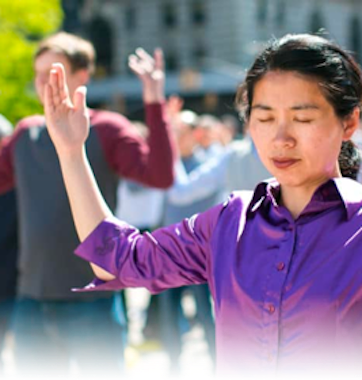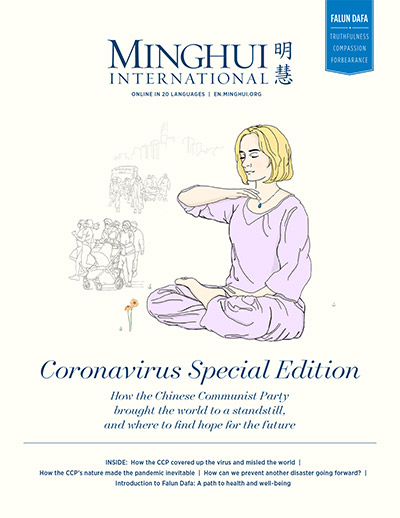(Minghui.org) A few years ago, I had a dream about a bridge with 17 arches. Out of curiosity, I searched online and found that there is indeed such a bridge in the Garden of Clear Ripples (now known as the Summer Palace) in Beijing. This Seventeen-Arch Bridge was meticulously designed and built. It is lined on both sides with 544 stone lions and is a masterpiece of both art and architecture.
Emperor Qianlong of the Qing Dynasty (the last imperial dynasty of China) ordered the gardens and bridge to be built in 1750 for his mother’s 60th birthday. Qianlong designed the structure and layout himself. He also left inscriptions in many places on the bridge.
Some people considered it was extravagant to build such a garden. In my opinion, it wasn’t just a gift for his mother. It was part of the legacy left by Qianlong to encourage people to follow the Confucian principles of benevolence, righteousness, propriety, wisdom, and fidelity. Furthermore, one should be closely connected with the divine; otherwise, disasters may arise. One of the buildings in the garden was a temple, showing gratitude towards the divine.
Qianlong’s mother devoutly believed in Buddhism and she was well respected throughout her life. Historical records showed the main activity on her 60th birthday—for her, the Emperor, officials, and ordinary people—was worshiping Buddha.
Divine Help to Complete the Bridge
There is a legend about the completion of the Seventeen-Arch Bridge. One day, an old man came to the construction site with his tool box and called out, “Who wants to buy a stone from the Longmen (Dragon’s Gate) caves?” There were many talented masons there at the time, but none of them were interested in the stone he was selling. So the man went to a place close by and every day he sat under a locust tree, carving the stone himself. A villager by the name of Wang felt sorry for the old man and offered him a place to stay at night. After carving the stone for about one year, the old man gave it to Wang and then left.
When the Seventeen-Arch Bridge was near completion, the masons tried to carve the last piece in the middle of the bridge. No matter how hard they tried, they just couldn’t get it right. Then someone remembered the old man and his carved stone, and sent someone off to ask Wang for the stone. Miraculously, it fit perfectly in place on the bridge and the masons knew they had been helped by the divine.
Preserving Traditional Values and Establishing a Foundation for the Future
Emperor Qianlong had many achievements during his lifetime and displayed great wisdom. Personally, I consider his life to be a cultivation journey and I believe his mission was to preserve traditional values.
When Emperor Qianlong was 12, his profound understanding of classical Chinese literature and Confucianism left a deep impression on his grandfather, Emperor Kangxi. When Qianlong became Emperor at the age of 25, he was able to handle major state affairs properly. This was not only because of his solid understanding of the classics, but also because of the influence of his National Master Zhangjia, a Living Buddha of Tantrism.
Nine years after Qianlong became Emperor, Zhangjia suggested that he convert Yonghe Palace into a temple and Qianlong agreed. The Emperor also had a large Buddha statue carved from white sandalwood. During the Cultural Revolution, three Red Guards tried to damage this Buddha statue, and two of them were hurt. After that, no one dared to damage the statue any more.
Another example of Emperor Qianlong’s accomplishments in preserving traditional culture happened when British envoys arrived in 1793. They wanted to open up trade ports and do missionary work, but Qianlong declined. My understanding is that he declined in order to preserve traditional Chinese culture and moral values. Based on my limited understanding, the British envoys wanted to export their own culture to China. Emperor Qianlong wanted to sustain the Chinese culture—which had been handed down by the divine—for future generations.
Another example of Qianlong’s outstanding accomplishment was his compilation of the Siku Quanshu (Complete Library of the Four Treasuries). With 2.3 million pages, it was China’s largest encyclopedia. Qianlong also built many imperial gardens in the Summer Palace and the Ten-Thousand-Buddha Pagoda in Beihai Park.
A New Perspective About Heshen
Heshen was one of the most corrupt officials in Chinese history, yet he was favored by Emperor Qianlong. When Qianlong died, Heshen’s wealth was confiscated. He was found to have an estimated 1.1 billion taels of silver, making him the richest man in the country.
Many people despised Heshen for his corruption and wondered why Qianlong tolerated it. Reflecting on it now, I think this could have been an arrangement in history. It might not be accidental that the Qing Dynasty had such a loyal official as Sun Jiagan and such a corrupt official as Heshen. Only when good and bad co-exist, can people tell the difference and know how to make the right choice.
We may not understand some of the things that Emperor Qianlong did in his lifetime, but perhaps he was just completing his mission. In other words, from the perspective of cultivation practice, many historic events were arranged for a deeper purpose.
Editor’s note: This article only represents the author’s understanding in their current cultivation state meant for sharing among practitioners so that we can “Compare in studying, compare in cultivating.” (“Solid Cultivation,” Hong Yin)
Copyright © 2023 Minghui.org. All rights reserved.
Category: Traditional Culture









